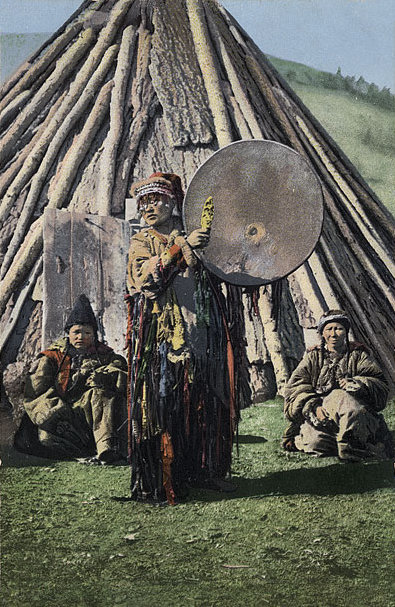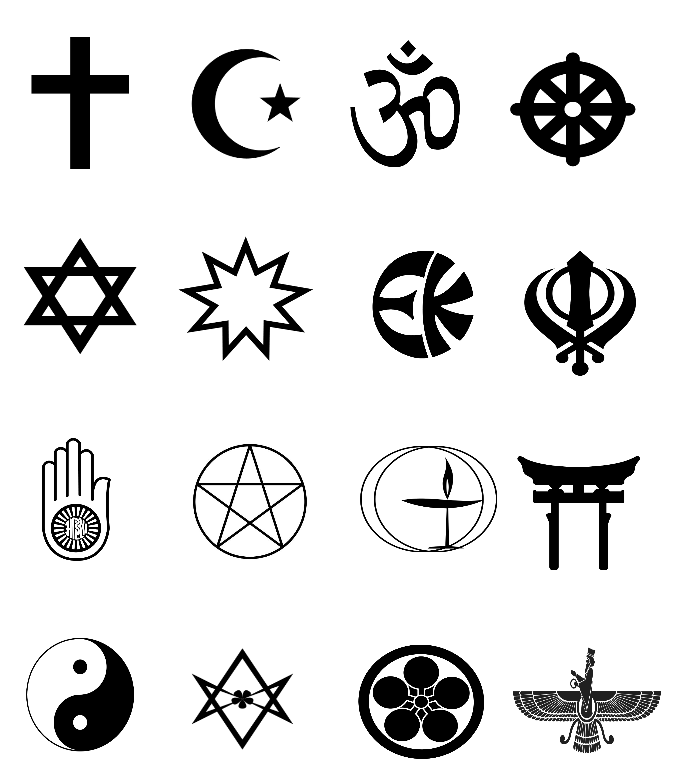|
Noaidi
A noaidi (, , , , , , ) is a shaman of the Sami people in the Nordic countries, playing a role in Sámi religious practices. Most ''noaidi'' practices died out during the 17th century, most likely because they resisted Christianization of the Sámi people and the king's authority. Their actions were referred to in courts as " magic" or "sorcery" (cf. witchcraft). Several Sámi shamanistic beliefs and practices are similar to those of some Siberian cultures.Voigt 1966: 296 Description and history Noaidis, often referred to as the "Sámi shamans", are the traditional healers and protectors of the Sami people. Noaidis are considered to have the role of mediator between humans and the spirits. To undertake this mediation, the noaidi are believed to be able to communicate with the spirit world, and to ask what sacrifice needed to be made by a person so that he might return to good health and be successful in the hunt for food. Sacrifices designed by the noaidi are understood to reest ... [...More Info...] [...Related Items...] OR: [Wikipedia] [Google] [Baidu] [Amazon] |
Joik
A joik or yoik (anglicised, where the latter spelling in English conforms with the pronunciation; also named , , , or in the Sámi languages) is a traditional form of song in Sámi music performed by the Sámi people of Sápmi in Northern Europe. A performer of joik is called a (in Finnish), a (in Norwegian, and anglicised) or (in Swedish). Originally, ''joik'' referred to only one of several Sami singing styles, but in English the word is often used to refer to all types of traditional Sami singing. As an art form, each joik is meant to reflect or evoke a person, animal, or place. The sound of joik is comparable to the traditional chanting of some Native American cultures. Joik shares some features with the shamanistic cultures of Siberia, which mimic the sounds of nature. History As the Sami culture had no written language in the past, the origins of joik are not documented. According to oral traditions, the fairies and elves of the arctic lands gave joiks to the ... [...More Info...] [...Related Items...] OR: [Wikipedia] [Google] [Baidu] [Amazon] |
Sámi Shamanism
Traditional Sámi spiritual practices and beliefs are based on a type of animism, polytheism, and what anthropologists may consider shamanism. The religious traditions can vary considerably from region to region within Sápmi. Traditional Sámi religion is generally considered to be Animism. The Sámi belief that all significant natural objects (such as animals, plants, rocks, etc.) possess a soul, and from a polytheistic perspective, traditional Sámi beliefs include a multitude of spirits. Sámi traditional beliefs and practices commonly emphasizes veneration of the dead and of animal spirits. The relationship with the local animals that sustain the people, such as the reindeer, are very important to the kin-group. Deities and animal spirits Aside from bear worship, there are other animal spirits such as the Haldi who watch over nature. Some Sámi people have a thunder god called Horagalles. Rana Niejta is "the daughter of the green, fertile earth". The symbol of the wo ... [...More Info...] [...Related Items...] OR: [Wikipedia] [Google] [Baidu] [Amazon] |
Imitation Of Sounds In Shamanism
Shamanism in various cultures shows great diversity.Hoppál 2005: 15 In some cultures, shamanic music may intentionally mimic natural sounds, sometimes with onomatopoeia.Hoppál 2006: 143 Imitation of natural sounds may also serve other functions not necessarily related to shamanism, such as luring in the hunt;Nattiez: 5 and entertainment ( katajjaqs of the ).Nattiez: 5 [...More Info...] [...Related Items...] OR: [Wikipedia] [Google] [Baidu] [Amazon] |
Tietäjä
Tietäjä (, pl. ''tietäjät'', 'seer', 'wise man', literally 'knower') is a magically powerful figure in traditional Finnic culture, whose supernatural powers arise from his great knowledge. Roles The activities of a ''tietäjä'' were primarily healing and preventing illness, but also included helping with farming, fishing and hunting; dealing with witchcraft; supporting approved marriages and disrupting disapproved liaisons; identifying thieves; and bringing success to ventures such as journeys or building. Their incantations might call on helpers such as the dead, '' väki'', Ukko, Jesus Christ, the Virgin Mary, or animal spirits. Many ''tietäjät'' knew '' Kalevala''-metre poems, as well as mythical stories, spells, and healing charms. One of the key branches of the ''tietäjäs knowledge concerned aetiologies ('' synnyt'', s. ''synty'') of natural phenomena. It was believed that beings and phenomena could be controlled if their origin was known. For example, disease cou ... [...More Info...] [...Related Items...] OR: [Wikipedia] [Google] [Baidu] [Amazon] |
Shaman
Shamanism is a spiritual practice that involves a practitioner (shaman) interacting with the spirit world through altered states of consciousness, such as trance. The goal of this is usually to direct spirits or spiritual energies into the physical world for the purpose of healing, divination, or to aid human beings in some other way. Beliefs and practices categorized as shamanic have attracted the interest of scholars from a variety of disciplines, including anthropologists, archeologists, historians, religious studies scholars, philosophers, and psychologists. Hundreds of books and academic papers on the subject have been produced, with a peer-reviewed academic journal being devoted to the study of shamanism. Terminology Etymology The Modern English word ''shamanism'' derives from the Russian word , , which itself comes from the word from a Tungusic language – possibly from the southwestern dialect of the Evenki spoken by the Sym Evenki peoples, or from the ... [...More Info...] [...Related Items...] OR: [Wikipedia] [Google] [Baidu] [Amazon] |
European Shamanism
European, or Europeans, may refer to: In general * ''European'', an adjective referring to something of, from, or related to Europe ** Ethnic groups in Europe ** Demographics of Europe ** European cuisine, the cuisines of Europe and other Western countries * ''European'', an adjective referring to something of, from, or related to the European Union ** European Union citizenship ** Demographics of the European Union In publishing * ''The European'' (1953 magazine), a far-right cultural and political magazine published 1953–1959 * ''The European'' (newspaper), a British weekly newspaper published 1990–1998 * ''The European'' (2009 magazine), a German magazine first published in September 2009 *''The European Magazine'', a magazine published in London 1782–1826 *''The New European'', a British weekly pop-up newspaper first published in July 2016 Other uses * * Europeans (band), a British post-punk group, from Bristol See also * * * Europe (other) * The Europ ... [...More Info...] [...Related Items...] OR: [Wikipedia] [Google] [Baidu] [Amazon] |
Sámi Mythology
Acronyms * SAMI, ''Synchronized Accessible Media Interchange'', a closed-captioning format developed by Microsoft * Saudi Arabian Military Industries, a government-owned defence company * South African Malaria Initiative, a virtual expertise network of malaria researchers People * Sami (name), including lists of people with the given name or surname * Sámi people, the indigenous people of Norway, Sweden, the Kola Peninsula and Finland * Samantha Shapiro (born 1993), American gymnast nicknamed "Sami" Places * Sami (ancient city), an ancient Greek city in the Peloponnese * Sami, Burkina Faso, a district * Sämi, a village in Lääne-Viru County in northeastern Estonia * Sami District, Gambia * Sami, Cephalonia, Greece, a municipality ** Sami Bay, east of Sami, Cephalonia * Sami, Gujarat, India, a town * Sami, Paletwa, Myanmar, a town Other uses * Sámi languages, languages spoken by the Sámi * Sami (chimpanzee), kept at the Belgrade Zoo * Sami, a common name for ''Proso ... [...More Info...] [...Related Items...] OR: [Wikipedia] [Google] [Baidu] [Amazon] |
Religious Occupations
Religion is a range of social- cultural systems, including designated behaviors and practices, morals, beliefs, worldviews, texts, sanctified places, prophecies, ethics, or organizations, that generally relate humanity to supernatural, transcendental, and spiritual elements—although there is no scholarly consensus over what precisely constitutes a religion. It is an essentially contested concept. Different religions may or may not contain various elements ranging from the divine, sacredness, faith,Tillich, P. (1957) ''Dynamics of faith''. Harper Perennial; (p. 1). and a supernatural being or beings. The origin of religious belief is an open question, with possible explanations including awareness of individual death, a sense of community, and dreams. Religions have sacred histories, narratives, and mythologies, preserved in oral traditions, sacred texts, symbols, and holy places, that may attempt to explain the origin of life, the universe, and other phenomena. Reli ... [...More Info...] [...Related Items...] OR: [Wikipedia] [Google] [Baidu] [Amazon] |
Jerome Rothenberg
Jerome Rothenberg (December 11, 1931 – April 21, 2024) was an American poet, translator and anthologist, noted for his work in the fields of ethnopoetics and performance poetry. Rothenberg co-founded the method of ethnopoetics with Dennis Tedlock in the late 1960s. Early life and education Jerome Rothenberg was born and raised in New York City, the son of Polish-Jewish immigrant parents, and is a descendant of the Talmudist rabbi Meir of Rothenburg. He attended the City College of New York, graduating in 1952, and in 1953 he received a Master's Degree in Literature from the University of Michigan. Rothenberg served in the U.S. Army in Mainz, Germany, from 1953 to 1955, after which he did further graduate study at Columbia University, finishing in 1959. He lived in New York City until 1972, when he moved first to the Allegany Seneca Reservation in western New York State, and later to San Diego, California, where he was living at the time of his death. Career In the late ... [...More Info...] [...Related Items...] OR: [Wikipedia] [Google] [Baidu] [Amazon] |
Ethnopoetics
Ethnopoetics is a method of recording text versions of oral poetry or narrative performances (i.e. verbal lore) that uses poetic lines, verses, and stanzas (instead of prose paragraphs) to capture the formal, poetic performance elements which would otherwise be lost in the written texts. The goal of any ethnopoetic text is to show how the techniques of unique oral performers enhance the aesthetic value of their performances within their specific cultural contexts. Major contributors to ethnopoetic theory include Jerome Rothenberg, Dennis Tedlock, and Dell Hymes. Ethnopoetics is considered a subfield of ethnology, anthropology, folkloristics, stylistics, linguistics, literature and translation studies. A need for ethnopoetics: Rothenberg Jerome Rothenberg coined the term ethnopoetics in the 1960s. According to Catherine S. Quick, Rothenberg had recognized that “most translations of Native American oral traditions . . . failed to capture the power and beauty of the oral pe ... [...More Info...] [...Related Items...] OR: [Wikipedia] [Google] [Baidu] [Amazon] |
Music Semiology
Music semiology (semiotics) is the study of signs as they pertain to music on a variety of levels. Overview Following Roman Jakobson, Kofi Agawu adopts the idea of musical semiosis being introversive or extroversive—that is, musical signs within a text and without. "Topics", or various musical conventions (such as horn calls, dance forms, and styles), have been treated suggestively by Agawu, among others. The notion of gesture is beginning to play a large role in musico-semiotic enquiry. There are strong arguments that music inhabits a semiological realm which, on both ontogenetic and phylogenetic levels, has developmental priority over verbal language. Writers on music semiology include Kofi Agawu (on topical theory, Schenkerian analysis), Robert S. Hatten (on topic, gesture), Raymond Monelle (on topic, musical meaning), Jean-Jacques Nattiez (on introversive taxonomic analysis and ethnomusicological applications), Anthony Newcomb (on narrativity), Thomas Turino (applying the ... [...More Info...] [...Related Items...] OR: [Wikipedia] [Google] [Baidu] [Amazon] |



